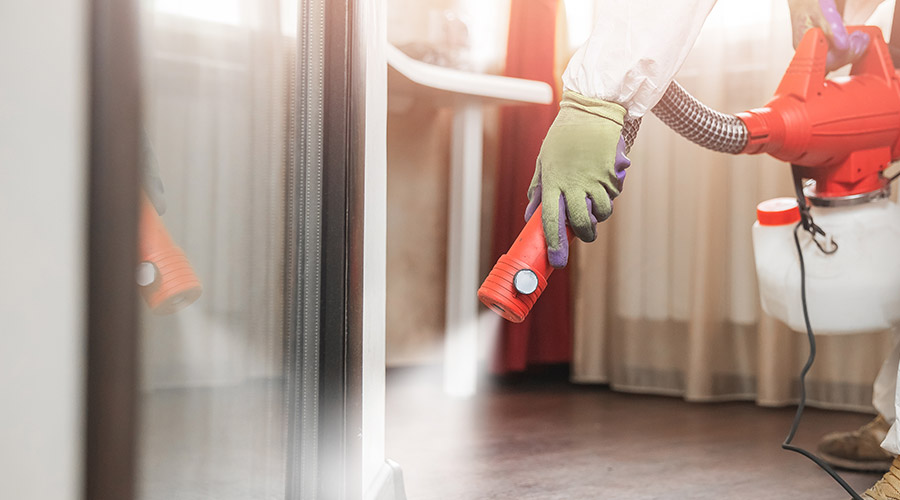As science and medicine continue to progress, people are living longer, healthier lives. Despite gains in medical knowledge and know-how, infectious diseases of various sorts still plague and even kill many people each year. Hospitals and other medical facilities, where nearly any environmental surface is susceptible to contamination with healthcare-associated pathogens, are in a constant battle to be rid of infections and to prevent the spread of them. Despite their best efforts, this is a great challenge for medical facilities
As studies suggest cleaning and disinfection is often suboptimal with healthcare workers treating only about 30 to 50 percent of the surfaces that they should be. Some of the methods hospitals are turning to in the fight against bacteria include ultra-violet (UV) systems, improved cleaning products, and basic hygiene.
Think about how many sick people walk into a hospital/medical facility every day. Some may knowingly have an infection though many have no idea themselves what they may be carrying. This element of uncertainty makes hospital completely eradicating infection nearly impossible. However, some simple steps can be taken that can have a great impact.
How many times were we all told to wash our hands when we came in the house? Well, one of the primary ways that infections spread is through hands and touch. Washing of hands, therefore can be instrumental in the battle against viral infections.
"Frequent, consistent hand washing is vitally important when it comes to preventing infections, and it matters for everyone – staff, visitors and patients - all need to practice good hand hygiene," Laurie Rabens, assistant director of marketing and innovation for Clorox Healthcare, said.
It's important to wash/sanitize ones' hands where ever one is in the hospital. Protocols can be developed to educate cleaning staff to wash and sanitize hands upon entering and exiting patient's rooms. Rabens suggested having hand sanitation stations outside of each room along with signs to remind everyone of the importance of hand washing. This is particularly important during flu season.
Another simple and effective step to fighting the spread of hard to kill pathogens like Clostridium difficile (C. diff.), a leading cause of healthcare-acquired infections, is bleach. While the positive impact of bleach as a highly effective surface disinfectant is well known, some people have a reaction to the smell. In addition, it can leave a residue that may leave the impression something is not clean and can be corrosive on surfaces and equipment.
For instance, in 2016, Clorox Healthcare launched a new type of bleach product, Clorox Healthcare FuzionCleaner Disinfectant. It's specifically designed to help hospitals balance the need to fight dangerous, hard to kill pathogens, with protecting surfaces and equipment from damage.
"It has very low odor and uses new technology to eliminate the chemical reaction that can damage surfaces and leave a residue, so it has a much better compatibility profile compared to the typical bleach on the market. Because of these features, hospitals and medical facilities can use it in places where they might have been hesitant to use bleach," Rabens said,
Fuzion was designed to help facilities fight dangerous hospital-acquired infections (HAIs) like C. diff. which caused almost half a million infections amount patients per year in the United States according to the Centers for Disease Control and Prevention (CDC). It’s EPA-registered to kill C. diff. spores in two minutes and 50+ other pathogens in two minutes or less.
UVDr. Velez said this was the first demonstration of UV’s efficacy to reduce viral infections. While Dr. Velez said she was thrilled with the results, she was also surprised. Sort of.
"Because St. Mary's is a long-term acute care facility, the patients are constantly interacting with the environment and materials and surfaces in it. When you have a group of patients that is already at high risk of infection, in a healthcare facility for an extended period of time and high levels of contact with surfaces and materials, it can be very difficult to prevent the spread of viral infections – especially when you’ve got flu and other viruses circulating in the community. They did a great job in implementing the system and achieved really exciting results," she said, adding that the system has worked in a variety of different facilities and been successful.
It's recommended that UV be used as a supplement to manual cleaning.
"UV can be the extra push to take care things that did not work in other ways. It can hit more surfaces, and enhance environmental hygiene as part of a larger bundle of infection control practices," said Dr. Velez.
From the overuse of antibiotics to more interaction/globalization bringing more things home, the challenges related to fighting viral infections have grown. While hospitals/medical facilities have come a long way in infection control, more needs to be done. Education, implementing day-to-day best practices, and using the most effective products correctly will help hospitals/medical facilities keep viral infections to a minimum.

 Barriers to Infection: Rethinking Mattress Cleaning
Barriers to Infection: Rethinking Mattress Cleaning Over 1 Million Individuals Affected in Community Health Center Data Breach
Over 1 Million Individuals Affected in Community Health Center Data Breach Prospect Medical Holdings to Sell Crozer Health to Non-Profit Consortium
Prospect Medical Holdings to Sell Crozer Health to Non-Profit Consortium The Top States for Pest Infestations
The Top States for Pest Infestations Ground Broken on Wichita Biomedical Campus Project
Ground Broken on Wichita Biomedical Campus Project